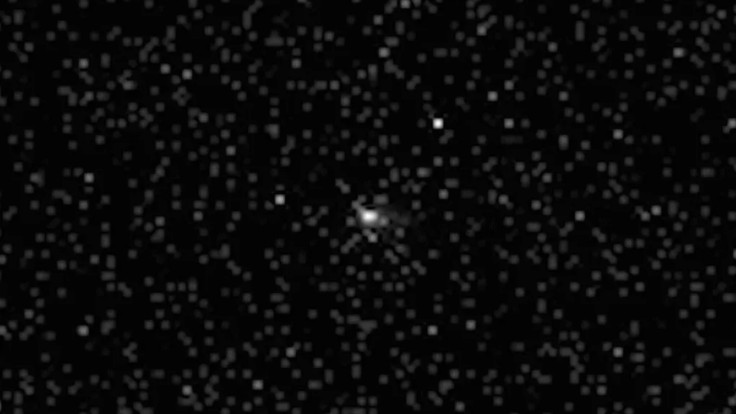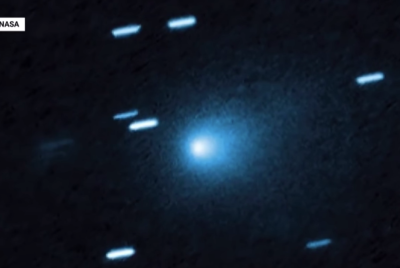3I/ATLAS Now Glowing Brighter—And It's Not Acting Like Ice
Why is interstellar comet 3I/ATLAS glowing so brightly? Its strange behaviour is rewriting astronomy.

Imagine peering through the vast darkness of space only to find an object that appears to ignore the established physical rules of the cosmos. That is the confounding predicament currently facing astronomers worldwide. The interstellar comet 3I/ATLAS, a visitor from an entirely different star system, has not just appeared in our neighbourhood; it has arrived in a spectacular, utterly inexplicable fashion.
When a stunning new photo of the comet was captured on 11 November by Ray's Astrophotography, it didn't merely impress, it baffled the entire astronomy community, sparking intense debate about the nature of interstellar matter, as documented here.
This celestial traveller is defying every expectation, and its dramatic, unexplained behaviour is forcing scientists to ask if everything they thought they knew about comets and interstellar objects is fundamentally wrong. Experts are certain that the object's current activity is behaving nothing like any comet we've ever observed within our own Solar System's domain.
Its complexity and defiance of conventional understanding are evident across multiple fronts: the chemical signature it emits, the unique shape of its tail, and the bizarre nature of its jets. Each element, observed in isolation, would be puzzling; observed together, they paint a comprehensive picture of an object that is a complete anomaly.

The Mystery of the Shifting Identity: 3I/ATLAS
3I/ATLAS was already renowned for its strange, unpredictable activity, yet this latest transformation has amplified the mystery tenfold, making it a priority target for telescopes across the globe. As an interstellar object, its very presence is fundamentally significant, giving us a rare glimpse into the materials that constitute other solar systems.
However, its current performance is unprecedented, moving beyond mere scientific curiosity into the realm of astronomical enigma.
In recent observations, the comet has appeared distinctly brighter, larger, and more energetic than before. This rapid, unpredictable escalation in size and activity suggests incredibly complex processes are at play within its core that standard cometary models—which typically rely on simple ice sublimation—simply cannot account for.
The material being ejected is somehow reacting with the solar environment in a way that generates immense energy and volume, far surpassing the output of a typical comet of its inferred size. This suggests its internal structure must be fundamentally different from the short-period and long-period comets originating in the Kuiper Belt or Oort cloud.

Beyond the Ice: The Erupting Heart of 3I/ATLAS
The most visually arresting element of this interstellar enigma is the radiant green hue that now emanates intensely from its centre. This isn't passive light reflection, or light merely scattered by fine dust; it's a powerful indication of dramatic internal upheaval and chemical reactions.
The greenish glow originates from the comet's heart, which is violently erupting with energy as it reacts to the Sun's heat. This intense sublimation and release of material is significantly more potent than what is observed in typical comets, suggesting a truly unique, possibly exotic or even alien, chemical composition.
This spectacular energy burst doesn't just increase the comet's brightness; it powers a massive, forceful jet of dust and gas bursts outward, which in turn creates a breathtaking, glowing halo. This coma is geometrically and structurally unlike anything seen surrounding a typical Solar System comet, forming a uniform glow instead of the usual, uneven fan shapes.
🚨 3I/ATLAS Just Changed Again — And Astronomers Can’t Explain What They’re Seeing 😳
— Astronomy Vibes (@AstronomyVibes) November 12, 2025
Captured on November 11 by Ray’s Astrophotography, this new photo of 3I/ATLAS has stunned the astronomy community. But here’s where it gets truly fascinating: astronomers say 3I/ATLAS is… pic.twitter.com/mXpqs2w1td
Researchers have been able to isolate several key findings about the structure and material. The composition is highly complex, featuring unusual ratios of common molecules and hints of yet-to-be-identified compounds, leading to the astonishing conclusion that: 'its composition and geometry still don't match any known object in our Solar System', further cementing its status as a complete cosmological anomaly.
No one knows yet what exactly is 3I/ATLAS doing? Is this cosmic traveller simply breaking apart violently as it approaches the Sun's intense influence, or is it undergoing a profound, internal transformation driven by exotic ices or minerals? Perhaps, most intriguingly, is it revealing an entirely new class of celestial objects, hinting at complex materials and physics from a distant stellar forge that we have never observed before?
Whatever the ultimate answer, one thing is certain: this object is not just visiting, it is actively rewriting what humanity thought it knew about interstellar visitors and the exotic matter they carry into our system, and its continued strange behaviour guarantees it will remain a captivating mystery for many years to come.
Whatever the ultimate secret hiding within its core, 3I/ATLAS is not just passing through; it is actively challenging the very foundations of interstellar science. The mystery is unfolding in real time, forcing astronomers to prepare for the unexpected.
© Copyright IBTimes 2025. All rights reserved.





















